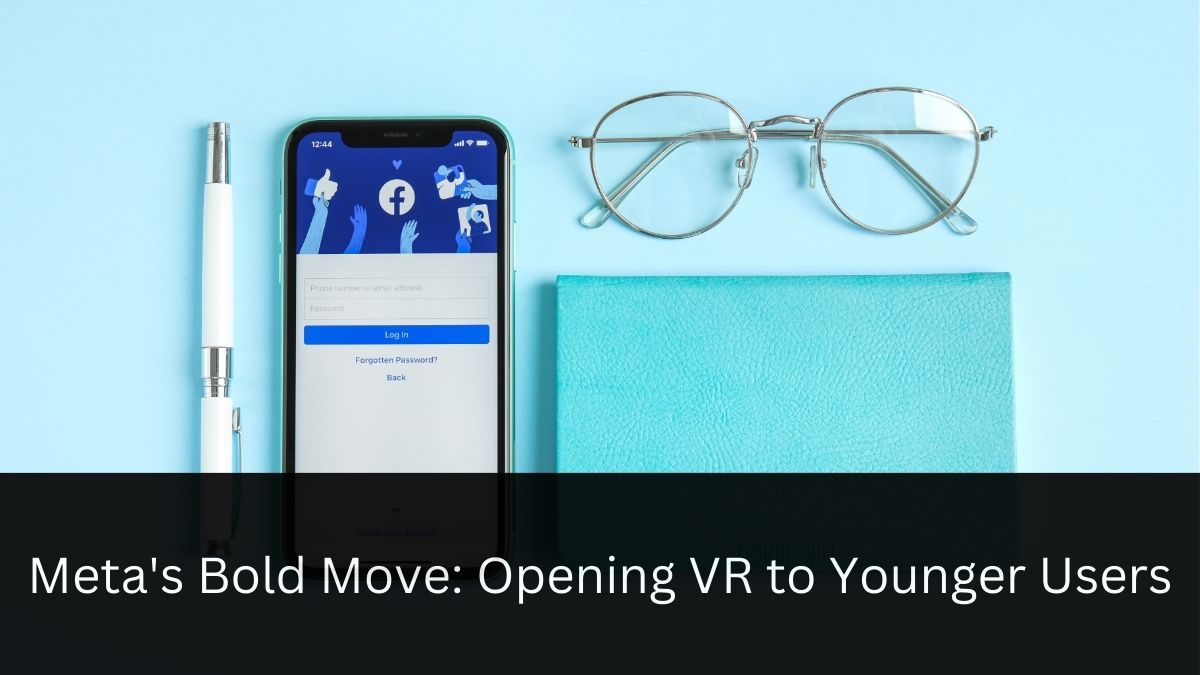Press Release
Meta’s Bold Move: Opening VR to Younger Users

In the ever-evolving landscape of technology, virtual reality (VR) has emerged as a frontier of immersive experiences. Now, Meta, the tech giant formerly known as Facebook, is pushing the boundaries further by extending VR access to a younger demographic. This decision marks a significant shift in the company’s approach to user engagement and raises important questions about the intersection of technology, childhood development, and digital safety.
A New Chapter in VR Accessibility
Meta’s recent announcement heralds a transformative change in the VR landscape. Soon, children aged 10 to 12 will have the opportunity to interact with others in virtual reality environments, provided they have parental approval. This marks a departure from the previous policy, which restricted VR interactions for this age group.
The Mechanics of Youth VR Interaction
The upcoming update introduces a nuanced system of parental controls. Parents will have the power to curate their child’s VR social circle by individually approving contacts for chat, calls, and invitations to join VR experiences. This granular level of control aims to create a safer, more monitored VR environment for young users.
The Strategic Implications
Meta’s decision to lower the age barrier for VR interaction is not without strategic considerations. By familiarizing younger users with VR technology, the company is potentially cultivating a future generation of VR enthusiasts. This move could be seen as a long-term investment in user adoption and loyalty.
Competing in the Youth Market
The tech landscape is fiercely competitive, especially when it comes to capturing the attention of younger users. Meta’s expansion into the 10-12 age bracket puts it in direct competition with platforms like Roblox and Minecraft, which have long dominated the youth digital space. By offering immersive VR experiences, Meta is carving out its own niche in this lucrative market.
Safeguards and Parental Controls
Recognizing the sensitive nature of introducing younger users to VR social interactions, Meta has implemented a robust system of parental controls.
The Approval Process
The cornerstone of Meta’s youth VR policy is parental oversight. For a contact to be approved, a parent must actively add them to their child’s Following and Followers list. This opt-in approach ensures that parents remain gatekeepers of their child’s VR social circle.
Flexibility and Control
Understanding that social dynamics can change, Meta has built flexibility into its system. Children can request to add new contacts, but the final decision rests with the parents. Moreover, parents retain the ability to remove approved contacts at any time, providing an additional layer of ongoing supervision.
The Evolution of Meta’s VR Age Policy
Meta’s approach to age restrictions in VR has been evolving. Last year, the company made waves by lowering the recommended age for Quest headset usage from 13 to 10. This was accompanied by the introduction of parent-managed accounts, designed to provide age-appropriate VR experiences for users between 10 and 12 years old.
Navigating Uncharted Waters
As with any technological advancement, the expansion of VR to younger users comes with its share of unknowns and concerns.
The Risk Factor
VR technology, while not entirely new, is still in its relative infancy when it comes to widespread adoption, especially among children. The potential risks associated with prolonged VR use in developing minds are not yet fully understood, leading to understandable apprehension among parents, child safety advocates, and researchers.
Regulatory Scrutiny
Meta’s decision comes at a time of increased regulatory attention on social media platforms and their impact on young users. Congress has been ramping up pressure on companies like Meta, TikTok, and Snapchat to enhance protections for children on their platforms. This move by Meta is likely to attract further scrutiny and debate.
A Personal Perspective
As someone who grew up during the rise of social media, I can’t help but reflect on how different the digital landscape is for today’s youth. I remember the excitement of creating my first social media account as a teenager, but the idea of immersive VR interactions at such a young age was the stuff of science fiction. It’s both thrilling and slightly daunting to see how rapidly technology is advancing and reshaping childhood experiences.
Meta’s decision to open up VR interactions to younger users is a watershed moment in the evolution of digital experiences for children. It presents exciting opportunities for learning, creativity, and social connection in virtual spaces. However, it also necessitates ongoing vigilance and research to ensure that these experiences are safe, enriching, and developmentally appropriate.
As we move forward, it will be crucial for parents, educators, policymakers, and tech companies to work together in shaping responsible guidelines for youth VR engagement. The potential of VR to enhance education, foster creativity, and connect young people across geographical boundaries is immense. Yet, this potential must be balanced with a commitment to safeguarding children’s well-being in these new digital frontiers.
Meta’s move to expand VR access to younger users is a bold step into uncharted territory. It challenges us to think critically about the role of immersive technologies in children’s lives and to actively participate in shaping a digital future that is both innovative and responsible. As this new chapter in VR unfolds, the choices we make today will play a crucial role in determining how future generations interact with and benefit from virtual reality technologies.
